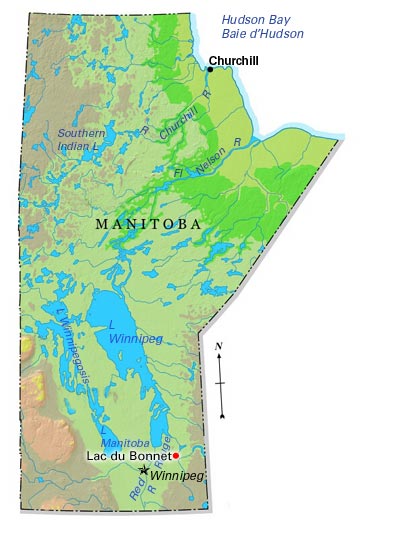Hanover, Manitoba, incorporated as a rural municipality in 1881, population 14 026 (2011c), 11 871 (2006c). The Rural Municipality of Hanover is located southeast of Winnipeg, encompasses the communities of Blumenort, Grunthal, Kleefeld, Mitchell, New Bothwell, Randolph and Sarto. The town of STEINBACH is no longer part of the rural municipality although the municipal office is located there.
History
Hanover includes land set aside in 1873 as the East Reserve for MENNONITES from southern Russia. Several hundred families arrived in the 1870s and organized self-governing agricultural villages. A second influx in the 1920s followed the Russian Revolution. Difficult farming conditions, disagreements with provincial education policies, and secular influences on the Mennonite way of life caused some of these settlers to move away. Anglo-Saxon, French Canadian, German Lutheran, Ukrainian and Polish settlers also helped build the rural municipality's communities.
Economy
Soil and drainage conditions encouraged a diversified agriculture - special crops, livestock, poultry, dairying and cereal grains. Blumenort is a Manitoba poultry centre; Grunthal, a dairy and milk products centre. Kleefeld is known for its beekeeping; New Bothwell for its cheddar cheese; the Steinbach area for cash crops and poultry. Business in the rural municipality mostly serves local markets. Of late several Hanover communities have become locales for commuters who wished to combine urban employment with rural homes and life-styles.

 Share on Facebook
Share on Facebook Share on X
Share on X Share by Email
Share by Email Share on Google Classroom
Share on Google Classroom


